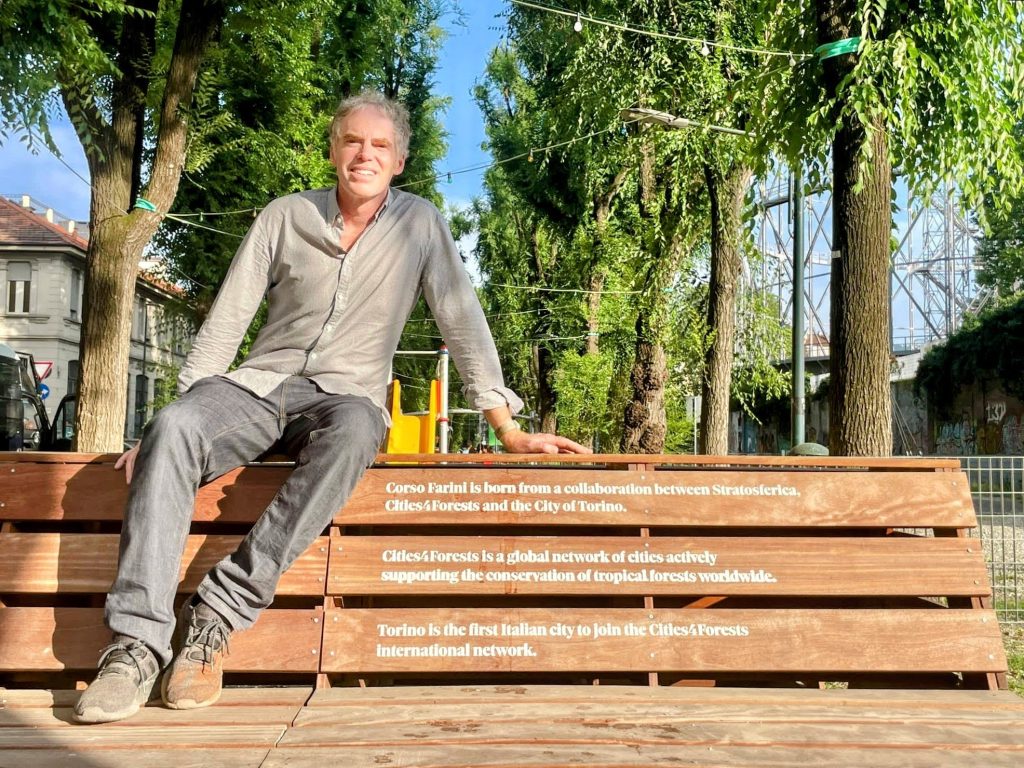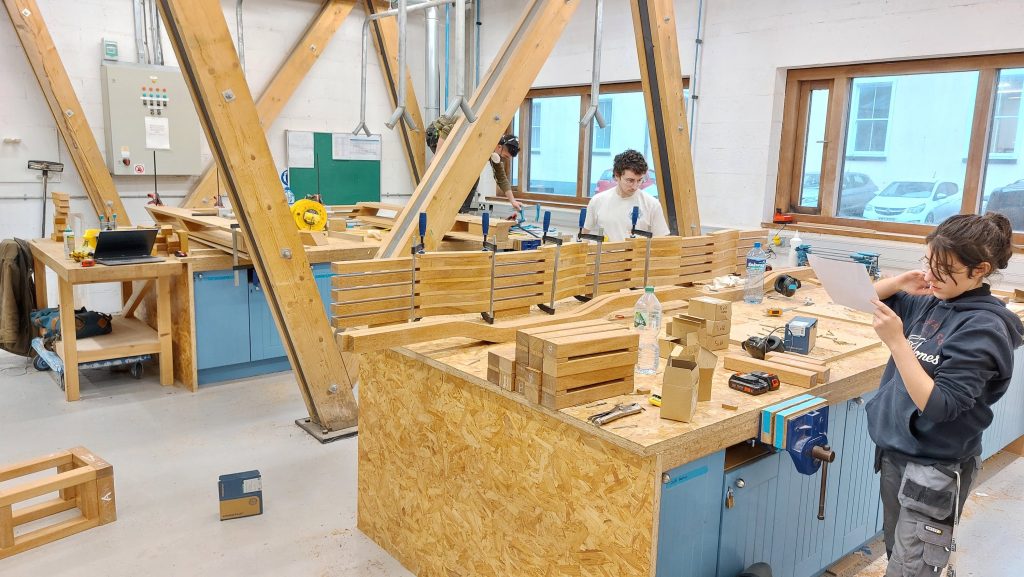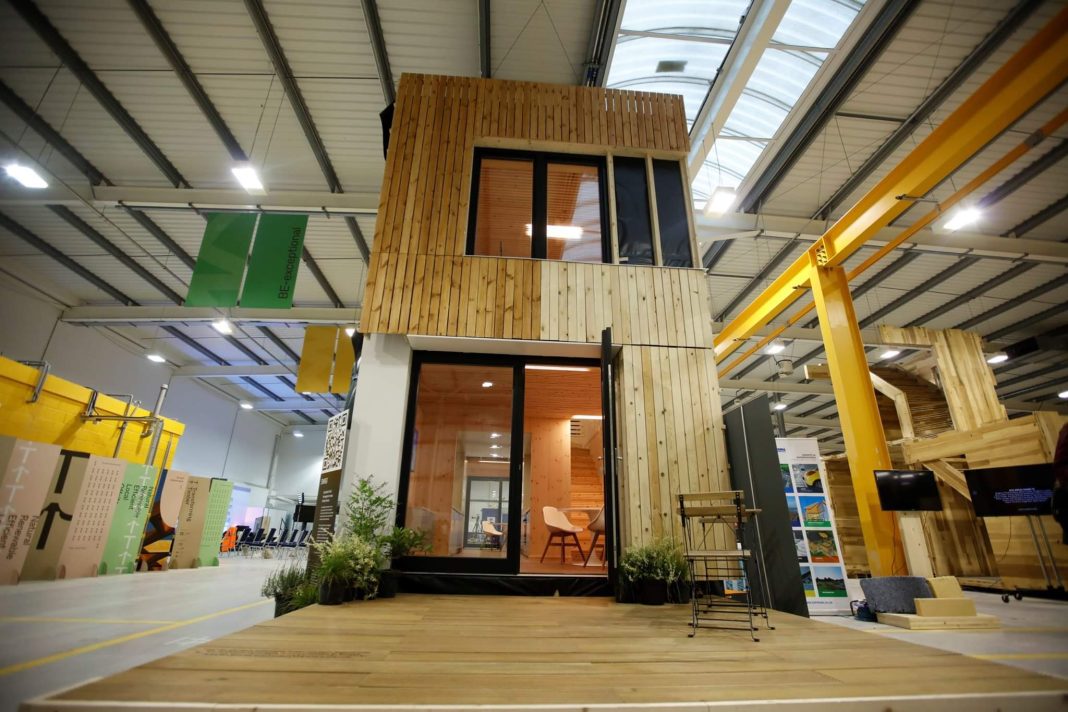Biobased materials can deliver buildings that are both low-carbon and fit residents’ needs: robust, resilient, and pleasant to be in. They can allow us to ‘partner’ with the natural world too, supporting the forest ecosystems we need, as a planet, to act as vital carbon sinks. Timber stands out as one of the most developed ‘alternative’ resources on the market, but widespread uptake is still sluggish. What’s the holdup? We ask some leading voices in the industry and get their ideas for what cities can do to push for change.
By 2050, two-thirds of the human population will already live in cities. Just ten years later, the United Nations predicts, we will need an additional 230 billion square metres of floor space to accommodate everyone – 80% of which will be in the Global South, estimates say – that’s double the 2010 equivalent!
It will require double the materials too, a third of which will be needed in those “rapidly growing populations and economically developing countries” in Asia and Africa – cruelly, some of the places most at risk from climate change.
Here we face a conflict.
With the built environment contributing close to 40% of gross annual carbon emissions globally, business as usual would see the expansion of our cities pushing the climate to breaking point.
That’s because construction “is dominated by the use of traditional materials such as concrete and steel, in what is a conservative, risk-averse and cost-driven industry,” says Paul King. He is CEO of Built by Nature, a network and grant-making fund that has a vision for a built environment that exists in unison with nature.
Reducing humanity’s impact on the environment relies on the industry changing. Sustainable natural materials may provide a significant part of the solution.
Why The Resistance?
The likes of cork, mud, straw, and hemp offer the chance to cut down or even sequester CO2 – timber especially, given its impressive structural capacity, versatility, and virtually global availability, says Scott Francisco from Cities4Forests.
All well and good. But if we’re going to phase out carbon-intensive materials, there are significant barriers to overcome, Paul explains.
“One of the most significant challenges that we face is the general lack of awareness and understanding of the role that biobased construction materials can play in decarbonising our built environment.”
Plus, there’s a lack of know-how: “The construction industry itself has indicated that there is a knowledge and technical training gap for working with new materials.”
Which is baffling. Wood is one of our oldest building materials.
Scott points out that the United States and Canada, for example, were already building plenty of large multi-story buildings and major bridges from solid timber components back in the 1800s. It was well known, he adds, that the massive size of these timbers made these buildings some of the safest, even in a catastrophic fire.

It was common practice in historic Europe too.
As well as wooden townhouses in many towns and cities, some cities were built on top of timber! Amsterdam’s tradition of constructing buildings and canals dates back further than 500 years. Venice, with its supporting poles that run deep into – and are preserved by – the swamps underfoot, has a similar story.
That knowledge has faded as other materials, like (even low-carbon) concrete, came to prominence.
The skills and policy support that make construction from alternative building materials possible just isn’t there. Furthermore, Paul notes, “climate policies can vary at the national, regional, and city levels”, limiting the capacity for replication between geographies.
Add to the mix rigid building codes, regulations, and directives – as well as a reluctance to move from risk-averse procurement processes – and we see little room for progress.
The Wonders of Wood
However, there are signs of change. Cities are increasingly turning to timber within new construction projects.
There’s the 20-storey-high public building, Sara kulturhus, in Skellefteå, Sweden, for example. Tanzania’s capital city, Zanzibar, is poised to erect a 27-storey tower; when completed it’ll be the world’s tallest wooden building to date.
High wood prices can still be a drawback – what Paul calls the “green cost premium”. But even these can be overcome if the market signals a growth in appetite.
As seen with solar panels, mainstreaming and scaling up leads to dramatic price drops in new sustainability-friendly practices. Timber, as an attractive commodity, is following the same trajectory.
Even now, in some places, the cost of constructing from wood is “pretty much neck and neck” with concrete and steel, Scott points out. “It’s going to catch up.”
Timber: The Change in Construction We Need
Great! Let’s roll our sleeves up and start building. Planet saved, right?
Not quite.
Cities are not isolated systems, Scott reminds us. Just as we’re “not mining the cement and the stone and processing the steel within their boundaries”, nor are cities ‘ground zero’ for timber. Supply is transnational.
Hence Scott claims that: “There’s no such thing as a net zero city.” Unless, that is, we invest in carbon sequestration in the landscapes far outside a city’s boundaries, and storage within. “This has always been one of the founding principles of Cities4Forests”, he adds.
We can take advantage of carbon sequestering, for example, “to balance the metabolism of the city” by:
- Creating a cultural push for timber construction, generating demand in public and private spheres – much like the UK government has done by publishing a roadmap for mainstreaming timber construction.
- Sating demand with a certified sustainable supply, complete with guarantees for quality, transparency, and regeneration.
And, as Paul points out, “trees are built from the carbon they absorb from the atmosphere”. So, by using their wood as a “substitute for concrete and steel in our buildings, it can store that carbon safely for decades if not hundreds of years”.
We have the opportunity to transform our cities from major carbon emitters to carbon stores.
Paul King
That being said, he adds, “we have to ensure that the demand for timber is responsible, and that it comes from genuinely sustainably managed forests”.
Sustainable Sourcing
That’s where Cities4Forests comes in. They support urban stakeholders to cooperate with the agrarian and forestry zones from which they obtain materials, and where sequestering takes place.
Supply systems are a tangle of processes and actors, which need to be unravelled and rewritten. It starts by removing the incentives associated with deforestation. Sustainable Wood for Cities does exactly that: showing cities that they should look to diverse sources for their timber – healthy, sustainable forests, whether from local circular sources, or in another hemisphere!
“Forestry, when practiced at its best, creates resilient long-term forests, which are going to perpetually produce material,” says Scott. They’re also good for the local communities – stewards of the forest – as this helps their economies thrive.
Linking both ends of the value chain, there’s the Partner Forest Program. This collection of pilot projects promotes public awareness of the connection between European urban construction and timber sources in the tropics.
As a result, pilots have been set up to take direct action. Galway County Council – actually representing a collection of regional towns in Ireland – is embedding sustainable timber into its official procurement policy. That’s a first for the European Union.

Other participants include cities such as Rotterdam, Netherlands; Turin, Italy; and Glasgow, Scotland, which will prove to be useful test cases for measuring the impact of the way a city buys and uses wood.
Scott recommends that other cities wanting to make similar changes use the free eight-pathway system guidance for procurement decision-making.
Action At the City & Policy Level
As this database collated by C40 makes evidently clear, there’s a growing number of clean construction policies emerging that municipalities can borrow from.
Amsterdam stands out from the crowd. It aims to construct 20% of residential properties from timber by 2025, with the municipal region even writing wood construction into its Circular Economy Implementation Plan 2023–2026.
Circularity of Timber
Consideration should be given to pre-used wood too.
Circularity is fundamental to cities getting to grips with carbon neutral or net zero building, Paul informs us – as is a reliable Life-Cycle Assessment (LCA) for biobased materials.
Pushing planners to conform with circular design principles is key to transforming the construction sector. It can extend material lifespans and reduce climate risks tied to the built environment by avoiding the demolition and burning of used timber, cellulose, flax, and cattail. A consortium in Amsterdam even developed a digital tool – CircuLaw – to help stakeholders navigate the complex policy landscape behind it, designed to accelerate the adoption of reusable timber.
The Dutch capital city sets a good example with their system set up to monitor circularity, but what about other locations?
With support from Built by Nature, circular construction foundation C-Creators are establishing a tracking system that they intend to roll out for universal use.
Things Are Looking Up
Whether sequestering carbon through regenerative forests, or containing it with circular practices, cutting construction emissions is a challenge that we need to master as soon as possible.
As more people arrive cities need to expand, and urban sprawl imposes on the natural world. We can curb that by looking upwards.
Optoppen – Dutch for ‘topping up’ – is an idea, being increasingly adopted, that allows cities to expand vertically. It densifies properties by constructing (usually with wood) extra rooms on rooftops of existing structures that can bear the extra load.
A year-long pilot is underway in the Netherlands, UK, and Spain, creating a tool to help building owners and city planners “easily analyse which buildings are suitable”, where and how much floorspace can be added, and the amount of harmful carbon emissions that Optoppen could avoid or store.
Handing the Baton to Cities
Clearly, innovation is blooming but there’s a long way to go, including the need to boost confidence in building with biobased materials.
Paul reminds us again of the loss of (historic) expertise around building from timber. He calls on municipalities to accelerate technical training through higher education provision and skilled trades development. Cities can also influence the shift by prioritising timber construction in local developments.
For their part, Built by Nature is pushing for Europe to adopt relevant policy and mainstream the use of timber through funding the Environmental Coalition on Standards – which happens to include Cities4Forests.
Paul wants municipal authorities to incentivise the switch to biobased materials by encouraging them to:
- revise building regulations
- rewrite procurement policies
- update masterplans and local zoning plans to create low-carbon districts
- upskill the workforce in handling new materials
- provide incentives for using biobased materials in construction, such as fast-tracking permits or offering a density bonus
- work with insurers to provide more flexible policy options – in other words, don’t raise premiums on the assumption that wood is highly flammable.
On the subject of finances, Scott mentions how a carbon tax levied against concrete and steel could make timber much more attractive in construction projects.
In all this, let’s not lose track of why we want to build from timber: it’s attractive, temperate, and even smells good. It gives us a sense that we’re closer to nature, which helps with wellbeing. And we cannot overlook why we need to push for this as a planetary species: carbon intensive construction materials are leading to a climate emergency, whereas timber provides a route to reversal. So how about we look to the past and mainstream building from wood again for the security of our future?
This article is produced in collaboration with the contributors as part of Laudes Foundation‘s support for the 2023 Urban Future conference.


